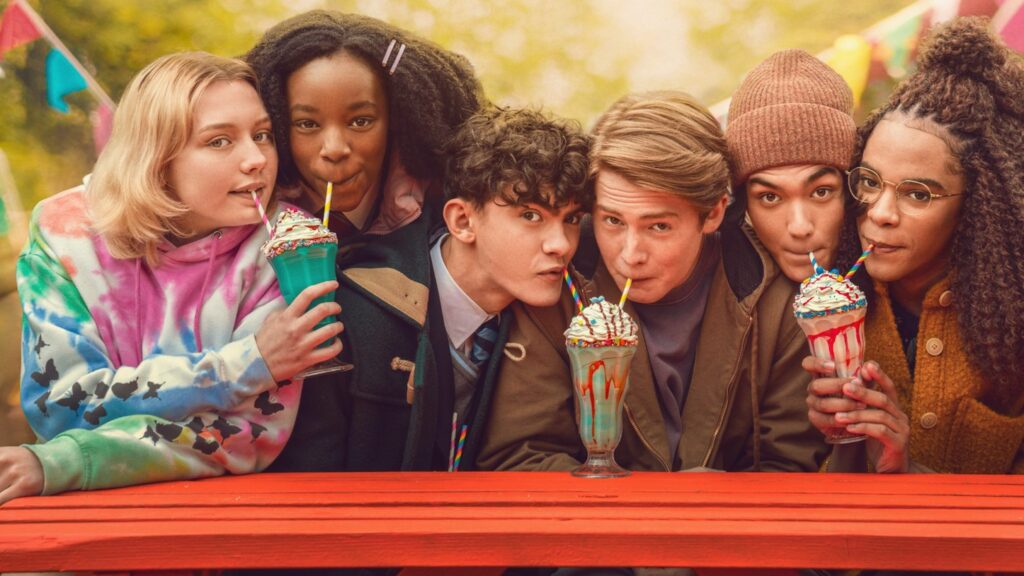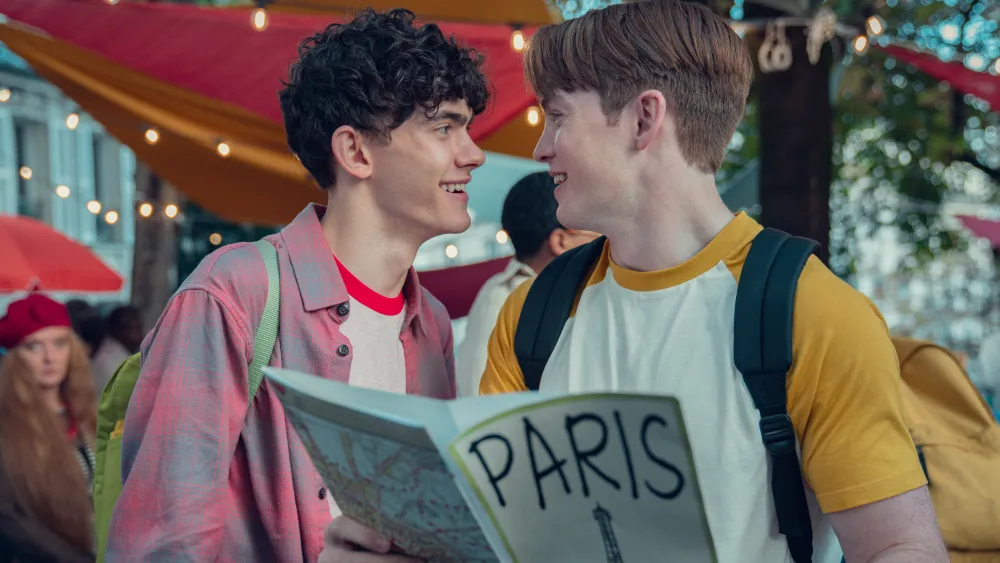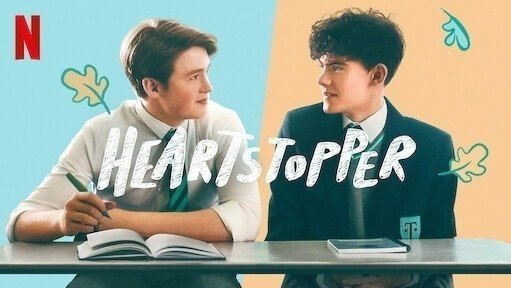Returning to our screens with a third season this October, I’m here to review the beloved LGBTQ+ show your kids, or even you, have been raving about.
The first series follows 14-year-old Charlie (Joe Locke) as he develops a crush on a popular rugby player at his all-boys school in Britain. With Nick (Kit Connor) certainly reciprocating some of those excitable, youthful feelings, it is the absolute tale of will-they, won’t-they. An upbeat but moving soundtrack, paired with the innocent confusion of teen, queer romance, leaves you feeling as though you’ve received a warm hug after the eight, fast-paced episodes.
Everyone at Charlie’s school already knows he’s gay. There are frequent references to when he was bullied as a result of this, as can sometimes sadly be expected in a school. Despite this, we have the opportunity to see inside his warm and supportive friendship group. They have sleepovers, movie nights, go out for milkshakes and more (all to be expected from a group of 14 and 15 year-olds). They communicate largely through Instagram DMs, gossiping and arranging meet-ups, something a lot of teens today can relate too.
One of Charlie’s friends is Elle (Yasmin Finney), a trans girl who moved from the all-boys school to an all-girls school for her final year of secondary school. This shines a light on a contemporary debate: where do non-binary and transgender kids fit in ‘single-sex’ schools? We see Elle warm up to her peers in her new school, notably the school’s secret lesbian couple, feeling safer and at-home in a female space. While homophobia is explored – with bullying from Nick’s rugby friends and Charlie’s secret self-loathing boyfriend – it is handled with care. Whether or not this is a true depiction of homophobic bullying in schools is to be questioned, as slurs are certainly kept to a minimum. But the general message of homophobia in schools would certainly be a sad truth a lot of queer youth can empathise with.

Bisexuality is a predominant plotpoint, as it will continue to be in season 2. We see an adorable scene with an anxious Nick coming out to his mum, Olivia Colman, who seems to be made for this part. They share a meaningful hug and she thanks him for telling her, a refreshing and important depiction of coming out. There is an overwhelming amount of scenes in the media showing parents giving a negative reaction to their queer children. While this is an unfortunate truth for a lot of people, it’s important for LGBTQ+ children to know they can have positive experiences too!
Charlie and Nick’s relationship comes alive in their on-screen DMs. As a queer person, the excitement and anxiety with sending the ‘you’re such a good friend’ to your childhood crush is more than relatable, anxiously awaiting their reply confessing their undying love for you and receiving nothing back. However, Nick sends Charlie a love-heart emoji and he falls asleep smiling, clutching his phone. This is what is different about Heartstopper: it is not some ‘silly’ queer person’s crush on a straight person, there’s hope. It’s what makes the show so ‘bingeable’. You keep waiting for something bad to happen, stopping two young boys in love from being together. But it never does, leaving you feeling safe and content.

Season two had a heavy weight on its shoulders. Heartstopper had received an overwhelming amount of support and love, and it did not disappoint.
After Nick and Charlie’s fairytale ending in season one, this season shows them navigating being boyfriends. Instagram DMs are once again used, sending ‘good morning boyfriend’ texts and arranging steamy makeout sessions in the library at school. We see their relationship mature along with them. The idea of sex is lightly introduced and handled with care, while they handle being in a somewhat secret queer relationship at school (although, it is pretty obvious).
The season spends a few episodes in Paris, on a school trip. Both the girls and boys school go together, same-sex rooms only of course. Nick and Charlie share a room with two of Charlie’s friends. It is here they both learn and share with each other they’re not ready for sex in an open and honest way we wish all of us could experience. This doesn’t stop Nick from accidentally giving Charlie a hickey on his neck (this is so teenager). Of course, this begs questions from other students: which boy has been giving Charlie hickeys?
Nick’s coming-out storyline is predominant this season. His peers are generally supportive and both him and Charlie have the chance to slam the door in one of the homophobic bullies’ faces (literally). However, this season also comes with a lot of conflict not we’ve not seen handled in the first. We meet Nick’s Dad who lives in Paris, as well as his petulant older brother, who does not handle the news as well as his mum (Olivia Colman). Mental health and eating disorders are lightly explored in this season, with this topic handled sensitively and carefully, showing informed and careful snippets of real-world issues.
Heartstopper’s general message seems to be a quiet appeal for understanding: of sexuality, gender, mental health, and simply the trials and tribulations of being human. We get the opportunity to see the intricate and unique (but relatable) lives of all the characters we meet. It is so easy to find someone to relate to in the show, whether it’s a parent who just wants to support their child like Olivia Colman, or a queer child desperately trying to navigate secondary school like Joe Locke.
I personally liked the second season even more than the first. The relationships are so rich. Charlie’s mostly-queer friendship group is what we all wish we had in school. It shows that queer people tend to find each other. While tackling more intense and ‘adult’ issues, it somehow remains a sweet and heart-warming show.
Heartstopper is arguably the most cringe-worthy and cheesey show on TV at the moment, but it gets away with it. In any other context, it would be unbearable. But when watching two young boys fall in love, you just can’t help but love it.

